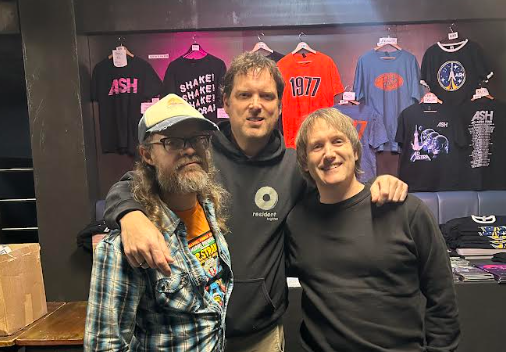Quench’s Film and TV editor Charlie Andrews gives us a brief insight into LGBT+ issues in the comic world.
Back in the beginning of April, GLAAD (Gay & Lesbian Alliance Against Defamation) held their 25th Annual GLAAD Media Awards, which sets out to honour a host of various films, albums, books, comics and other media from 2013 for their “fair, accurate and inclusive representations of the lesbian, gay, bisexual and transgender community and the issues that affect their lives”.
It is the penultimate media ÔÇô comics ÔÇô that I want to draw attention to in this article. As with the other forms of media that are listed above, comics have constructed a whole host of characters who represent the LGBT+ community and many a story have been crafted around issues and opinions regarding said community. In this article I wish to bring to your attention a selection of characters who have been important role models for the LGBT+ community as well as society as a whole. But first, I think the best place to start would be to tell you who won the GLAAD award for the comic category.
The Outstanding Comic Book category featured an especially robust selection of nominees, but ultimately the award was presented to Marvel’s recently concluded Young Avengers title – from writer Kieron Gillen, pencillers Jamie McKelvie and Mike Norton, colourist Matthew Wilson, and letterer Clayton Cowles. Young Avengers was most notable for featuring the popular gay superhero couple Hulkling and Wiccan, but it also explored the complicated sexuality of the remainder of the team roster.
“With Young Avengers, thanks to the work of Allan Heinberg and Jim Cheung in its creation, we had an incredible opportunity to push these themes even more prominently,” said Gillen in Marvel’s press release. “The response from the people who the book spoke to has been absolutely humbling. Receiving the award continues that particular theme. We’re both lucky and grateful.”
In the original Young Avengers series, writer and creator Allan Heinberg intended to reveal that teammates Wiccan and Hulkling were a couple in issue #12. But to his surprise, many fans picked up on the clues of the first two issues and quickly concluded the truth. Recently, the Young Avengers disbanded after a disastrous mission. Months later, Hulkling proposed to Wiccan and, that very night, the two were told that they were now considered official Avengers. This all happened in the pages of ÔÇÿAvengers: The Children’s Crusade #9′, which was the first comic to feature the two characters sharing a true kiss, nearly seven years after their introduction.
Another title that was nominated within the Outstanding Comic Book category was DC’s Batwoman. The original Batwoman was Kathy Kane, a circus owner and thrill-seeker who seemingly decided to adopt the life of a costumed adventurer for the sheer fun of it (and to get Batman’s attention). She was introduced in 1956 in response to comic book critics who alleged that the Dark Knight was homosexual and that his stories were partly gay propaganda. After a few years of fun misadventures, Kathy Kane largely vanished from comics.
Fifty years after Kathy first appeared, a new Batwoman debuted in the world of DC Comics. Kate Kane (a relative of Kathy’s) was a woman who had lost her mother and sister to kidnappers when she was a child. Later on, Kate joined the U.S. Army, as her father had before her, but the Don’t Ask, Don’t Tell policy later got her into a situation where she could either come out as a lesbian or allow someone else to be investigated. Kate came out and left the military behind. A later encounter with the Batman convinced Kate that there was still a way for her skills and training to be useful. With her father as her aid, Kate wages war on Gotham’s criminals as the Batwoman. Kate is noted for being romantically involved with Maggie Sawyer, an old friend of Superman’s, and this relationship has recently progressed to the point where they are now engaged. With DC’s reboot of continuity (The New 52) back in 2011, Batwoman was given her own title, thus becoming the first gay superhero to headline her own on-going title.
Batwoman may be the first gay superhero to headline her own title, but she isn’t credited with being the first gay superhero. That accolade is awarded to the X-Man Northstar. Jean-Paul Beaubier was first introduced in 1979 in the pages of Uncanny X-Men, as a member of the Canadian superhero team Alpha Flight before later joining the X-Men.
Created by Chris Claremont and John Byrne, Northstar was intended to be gay but this was not openly stated until 1992 after another character confronted him about how famous and influential people could bring greater attention to LGBT+ issues and the rising AIDS epidemic. As a result, Northstar came out at a press conference and went on to become a speaker for LGBT+ rights.
Northstar’s gay-superhero-poster-boy status doesn’t stop there however. Twenty years after gaining so much external publicity, Northstar did it again by marrying his long-time boyfriend Kyle Jinadu, thus giving Marvel its first superhero same-sex marriage. Northstar proposed at the end of Astonishing X-Men #50 and the actual ceremony took place in issue #51. Writer Marjorie Liu regularly explored the challenges Jean-Paul and Kyle faced in reconciling their two opposing lifestyles. As mutants, as gay men, and as men in an interracial marriage, they faced no shortage of adversity. Yet, they persevered – opening a door for other same-sex superhero couples. In fact in the same issue, Liu provided a treat for long-term X-Men fans by acknowledging the homosexual relationship between Mystique and Destiny that had so often been alluded to in the past. With Northstar and Kyle’s progress, hopefully, we’ll fast reach a point where same-sex marriage in comics is commonplace enough that it doesn’t need to be the source of mass media hype any longer.
If you’re not a big fan of comics or an avid reader, then there is one further example that you may have encountered way back on the TV platform. Buffy the Vampire Slayer had a massive following, partly because it subverted the typical gender stereotypes by portraying Buffy, the lead female, in an action hero role. The series was also popular amongst the LGBT+ community because it put the gay character Willow and her relationships at the centre of its later seasons. When the series concluded on TV, it continued onto its eighth season through the comic book medium. Not only has this series featured several different lesbian characters (Willow, Tara, and Kennedy), but it also went so far as to allow its main character, Buffy, to experiment with a same-sex encounter.
Drew Goddard, who was a writer for Buffy back when it was a TV series, sums up this article nicely when he says: “even though we’ve still got a ways to go, we’ve made tremendous progress with regard to portrayals of human sexuality in pop culture over the last ten years or so. So, the stage just feels different now”.





